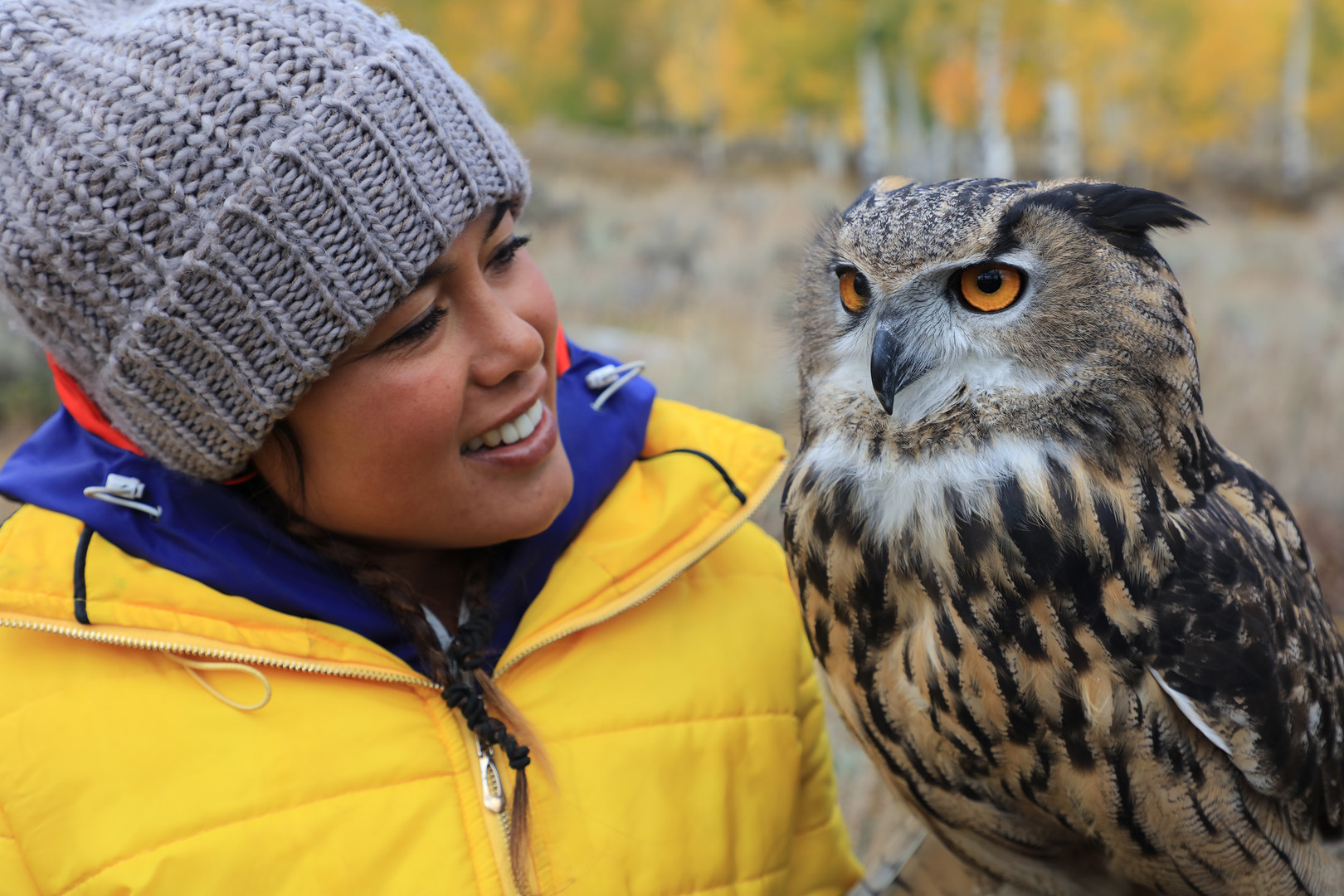Missoulian: https://missoulian.com/entertainment/movies/missoulas-virtual-international-wildlife-film-festival-kicks-off-this-weekend/article_73908edf-4f3a-57eb-80d4-db7b292f3a85.html
With a plethora of free films and educational resources galore, Missoula’s 43rd annual International Wildlife Film Festival kicks off this weekend in a virtual format that brings the wonders of animals from around the world to the viewer at home.
Streaming films through their website and using Zoom, Facebook Live and YouTube Live, organizers have worked to plan a fully virtual festival week in the wake of the coronavirus pandemic and social distancing measures meant to slow the spread of the coronavirus.
When IWFF made the call to forego an in-person event in mid-March, they quickly realized people would need content to stream while following stay-at-home orders, and jumped on the chance to present their festival to a wider audience.
“In relation to nature and the environment and having everybody sort of slow down and take a minute to look around them and explore new ideas and explore new media, it was kind of a cool opportunity for us to maybe even have a larger, more international reach than we usually do at the Roxy for the festival,” said IWFF artistic director Carrie Richer.
This year’s lineup features more than 80 films from around the world, a majority of which can be streamed for free during the festival, running April 18-25.
“In terms of accessibility to seniors and to kids and to people who don’t normally stream programming, we just really wanted to make it easy, simple and available to everyone,” Richer said.
A virtual pass is also available to purchase on a sliding scale, with a minimum cost of $5, and includes access to daily featured programming, behind-the-scenes extras, live-stream Q&As with filmmakers and an additional film library (see box for details).
Despite the fact that the IWFF and its host the Roxy Theater need donations and income now more than ever, they’re hoping the sliding scale will both allow people facing hard times to participate, while encouraging people who can to chip in a bit more.
“I think we’re just trying to hope the people who really appreciate the content and can afford, will sort of come in and step up for those people who are really not in a place where they can pay anything right now,” Richer said. “We just want to make sure it’s available to as many people who can take advantage and hopefully it just comes around. We’re just betting on karma.”
With schools closed in Missoula and across the country, this year’s IWFF is putting a focus on additional educational resources teachers can use for online learning during the festival week.
Education coordinator Brit Garner has curated a list under the “Education” tab on the IWFF website, wildlife films.org, that suggests films based on grade level. The list includes titles that would have been part of the free youth matinees the festival organizes each year for K-12 students, so if teachers already had a film in mind to focus on, they’ll still have the ability to do that.
She’s also gathering extra resources to go along with each selection showing at the festival so teachers can do more than just watch the film, including links to articles, at-home activities and additional videos.
“I wanted to keep within the spirit of the medium that is film and some of the best educational content I know is produced here in Missoula,” Garner said, pointing to Crash Course and Sci Show Kids, creations of brothers John and Hank Green.
She said the activities available will range from arts and crafts projects to try-it-at-home experiments.
“We’re totally blown away by all of the educators that are pivoting like us as well, so we really just want to support them and hope that a lot of this content can be easily adapted into those classrooms,” Richer said.
This year’s judging process has evolved to include University of Montana graduate students in the realms of wildlife biology, media, documentary journalism and environmental studies, an homage to the festival’s roots.
“This festival was founded by the biology department at UM 40-plus years ago and it really underscores scientific accuracy and ethics and responsibility,” she said, adding those are the driving forces behind IWFF. “Having those grad students who are so involved in day-to-day research and current events was really helpful in order to pick up films that were doing a good job with that value system.”
The film categories have also been adapted to emphasize more short films and put a spotlight on environmentalism, stewardship and sustainable ideas, Richer said, adding with so many of the films available to stream for free, she’s hoping they can tap into people who might not normally come to the festival in Missoula or who don’t spend as much time thinking about nature and the environment.
Categories include “Animal Behavior,” “Children’s,” “Features,” “Living With Wildlife,” “New Vision,” “Short,” “Short Short,” “Student,” “Sustainable Planet” and “Wildlife Conservation.”
Festival-goers might notice an unusually high number of wildfire-related films this year, as the team originally planned for a bigger, overarching motif called “Ignite.”
“That was going to be a big 2020 theme,” Richer said. “(Wildfire) is a great topic to explore when you’re in Missoula because there’s just so many experts and people studying it. There’s so much activity and it’s just really close to home.”
Without being able to hold the event in Missoula, that aspect has been postponed.
“We have plans to do maybe a live event this summer that can really highlight the wildfire aspects that we were looking at,” Richer said, adding the corresponding films will still be available to stream during the virtual festival.
In addition to the virtual pass, IWFF is encouraging people taking advantage of the free films to donate if they can.
“Donations are really essential to us. We just really need support for our staff and for (the Roxy) in order to keep on going,” Richer said.
With so many of the selections originating in locations across the world, IWFF is asking filmmakers who are no longer coming to Missoula to queue their own communities into the virtual event.
And Richer pointed out, as we’re all navigating a new norm at home, a beautiful opportunity has arisen from not being able to hold the festival in Missoula — the chance to be a part of a global wildlife watch party.
“Already we’re looking at passes that have been purchased from lots of other countries, and that’s a very cool collective viewing concept that I think we can all sort of appreciate being a part of right now.”
VIRTUAL PASS FEATURED PROGRAMMING:
Virtual Passes can be purchased on a sliding scale, with a minimum of $5 at wildlifefilms.org. Films that can be streamed for free can be found in the “Free Streaming Films” section under the “Virtual Festival” tab on the IWFF website.
Virtual Passholders will have access to the following:
April 18
View “Nature: Making Contact: Octopus” and octopus extras.
Since the annual WildWalk Parade can’t go on this year, show your costume and best “rawr” face using #wildwalk2020.
April 19
View “Lil Bugs” shorts block plus a live Zoom tarantula feeding with Missoula Insectarium and more.
April 20
Mushrooms: View “The Kingdom” and “The Mushroom Hunters,” various fungi extras from Untamed Science and mushroom secrets from your own backyard.
April 21
View “From Kurils With Love,” plus a live Q&A with director Taylor Rees and her team.
April 22
View IWFF’s Earth Day shorts from IWFF past and present plus a live Q&A with Tom Mustill, director of #NatureNow.
April 23
View “Takaya: Lone Wolf” along with updates on Takaya’s journey and extras from the film’s subject/co-creator Cheryl Alexander.
April 24
View “Tigerland” and hear perspectives on tiger conservation from Ph.D. candidate and Wild Tiger Executive Director Sarika Khanwilkar.
April 25
Winners of the 2020 film competition will be announced including Best of Festival.



